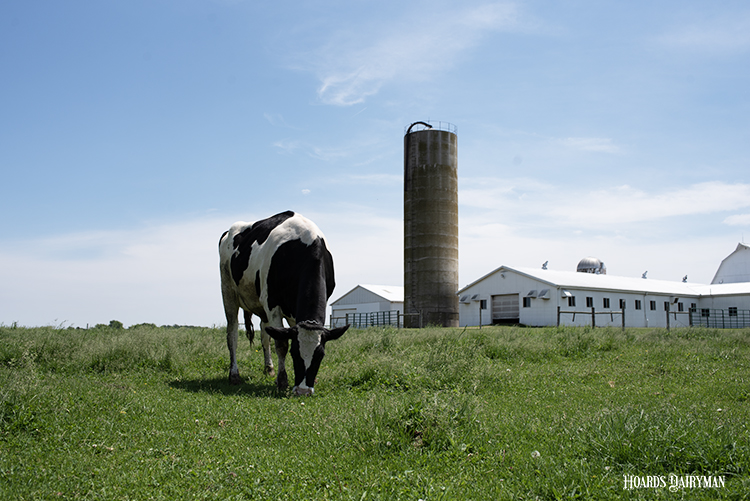
Cows grazing on green grass in front of a picturesque barn can still be found on some dairy advertisements even though it’s true for fewer of today’s dairy farms. But Jason Cavadini thinks that reality can change.
“We tend to think of something as not being able to help us because it looks like the past,” said Cavadini at a presentation during the Professional Dairy Producers (PDPW) Business Conference. “But solutions are often right in front of us.”
Cavadini is the grazing outreach specialist with University of Wisconsin-Madison Extension and an advocate for how the practice can answer a lot of the questions around water and soil health that farms face today. He recognized that every farm can choose the best option for them, but he also challenged farmers to be continuously asking if what they are doing is helping or hurting the resources they have access to. There are pros and cons of every decision.
To be an economic and environmental solution, though, a grazing system must be managed, and that means following a handful of key principles that Cavadini outlined. “This is not your grandfather’s grazing,” he began.
Best practices lead to results
First, start with a solid forage base of grass and legumes. Develop your rotation on a 30-day to 40-day schedule to allow for leaving 4 to 6 inches of residual. Everything comes back to what is left behind, Cavadini emphasized.
He showed images of plants grazed to various levels to illustrate the difference in root capacity. When half of the forage is taken off, roots continue growing as normal. However, when 70% of plant material is removed, half of the above-ground growth will stop for about 17 days. If 90% of the material is taken off, all above-ground growth will halt for 17 days.
“We yield more across the whole system if we leave more residual,” the specialist summarized. Deploying an effective cutting/clipping strategy also helps keep plants in a high-quality vegetative state.
To help achieve the desired removal rate, keep livestock on a particular pasture for a short duration. He advised a high stocking density per paddock but a low stocking density for the whole farm so that animals can be moved more frequently. When all of these practices are used appropriately, an extended grazing season (mid-May into November) can be achieved.
Cavadini specifically pointed to heifers as a group that can be beneficial and relatively simple to graze. He recognized it may not be feasible for all farms as they consider buildings sitting empty, putting fence back in, sacrificing productive land, and the concern of animals not growing as well. Farmers he talked to also admitted a lack of knowledge about grazing.
If a farm wants to implement grazing, Cavadini offered a few tools that may make it more possible. One is the fact that more farms are planting cover crops that may be able to be grazed. There are also technologies that more easily monitor pasture growth. Even virtual fencing, which works through a neck collar, is bringing grazing into a “new frontier.”
Cavadini summarized by saying that excellent soil health can be thought of as a ladder to climb up. It begins with keeping soil covered and minimizing disturbance before moving up to maximizing diversity and then having continuous living roots. Many farms achieve these four steps, but the last rung — integrating livestock — is more difficult to reach.
“Grazing stimulates biology and improves soil health in a way harvesting cannot,” he concluded.








